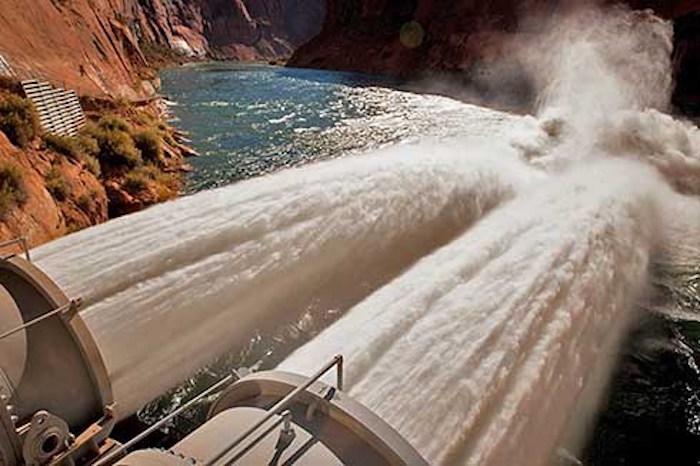
Torrents of water are to be released from Glen Canyon Dam early in November/USGS
During November 5-10 the Department of Interior will begin increasing the release from Glen Canyon Dam for a high-flow experimental release of approximately 38,100 cubic feet per second for 60 hours over three days.
The goal of the high-flow experiment is to move sand stored in the river channel and redeposit it to rebuild eroded sandbars and beaches downstream of the Paria River in Grand Canyon National Park.
This release follows the science-based Protocol for High-Flow Experimental Releases from Glen Canyon Dam approved in the 2016 Long-Term Experimental and Management Plan Record of Decision for Glen Canyon Dam operations and is a component of the Department’s compliance with the Grand Canyon Protection Act of 1992.
The Grand Canyon Protection Act mandates that Glen Canyon Dam be operated in a manner that protects, mitigates adverse impacts to, and improves the values for which Grand Canyon National Park and Glen Canyon National Recreation Area were established.
Previous experimental releases from Glen Canyon Dam have demonstrated that it is possible to rebuild beaches and sandbars in Grand Canyon via high flows.
Since 1996, releases from Glen Canyon Dam have generally ranged from 8,000 to 25,000 cfs. The increase in flow to approximately 38,100 cfs will change conditions on the Colorado River. Research has shown that some normally difficult rapids decrease in their technical difficulty, and other rapids become more technically challenging at higher flows. River users should exercise caution along the Colorado River through Glen and Grand canyons during the entire week of November 5.
There are inherent risks associated with recreational activities along the Colorado River corridor through Grand Canyon at all times.



Comments
I hope it works. But so often we hear of proposals, but never hear if they work.
"Works" is a relative term. Yes 60 hours of high flow might move some sand around a bit, but it is nothing like the pre-dam flow of the river. Look at the historical seasonal hydrograph for the Colorado River at Lee's Ferry:
https://waterwatch.usgs.gov/?id=wwchart_rastergraph
(I think that site 09380000, flowtype daily, year type calendar, units ft^3/s is the default, if not choose those at the top).
Blue is high flow, up to >100000cubic ft / sec, red is low flow, even 1000 cubic ft /sec (the color ramp is a log-scale). The bottom half of the figure is pre-dam, with 1-3 months of very high flow usually May & June, and flows 5000 cuft/sec common September - March. The red very low flow 1964 is the reservior filling, and above that are discharge controlled by the dam operations.
With the exception of the wet years in the middle of the 1980s, there hasn't been a high flow like those that routinely happened for a month or more in most years. Even those were like moderate years pre-dam. Conversely, there haven't been sustained low flows in Sept - Feb, either, the orange to red pre-dam becomes yellow and light green post-dam. The narrow strips of yellow in the green shifting forward a day or 2 each year are the giveaway: much higher than pre-dam flows are producing hydropower, and the flows are reduced on weekends when the demand for power is less. You can also see the operating specification abruptly changing on specific dates consistent for several years at a time (rectangles of yellow dominated weekday vs green dominated weekday). [This is an awesome visuaization of changes in seasonal data invented by an old USGS guy that I use in my teaching to NPS and other staff.]
The 38000 cubic ft/sec of this surge is a darker green, but not even bluegreen or teal, and November isn't the high-flow season. You can see in the graph many of the prior experimental flows: 5 in November since 2004 in teh upper right, one in February one in March.
So "works" is only possible for a tiny result of moving some sand. We use the power and the water, and we prioritize those over the River and the Grand Canyon gorge.